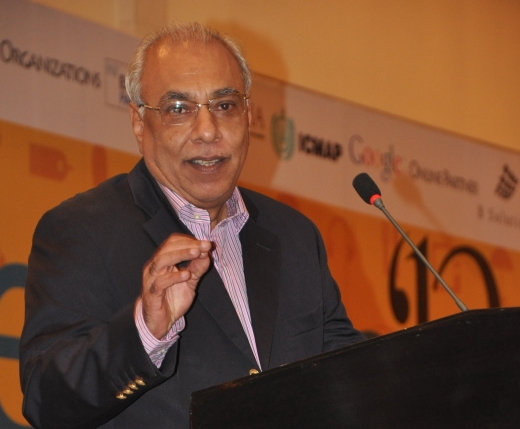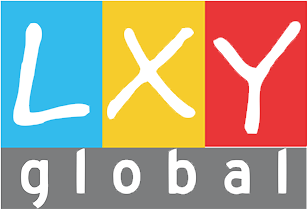
Retail and Retail Management for Commodities
Arif Ijaz
Director Maple Leaf Cement
Not Just about FMCGs:
The general perceptions about retail centre on FMCGs (fast moving consumer goods). The word retail, however, encompasses all goods and services sold to consumer by various businesses. My first experience with retail was at Adamjee Insurance company. Insurance in the developed world is 6 percent of the GDP, in India it is 3 percent of the GDP, while in Pakistan it is only half percent of GDP. Why it is like that? The reason, of course, is simple. The insurance companies have no concept of what does retail actually involve. They still believe in the old-fashioned mode of person to person selling. They are not huge on market; they don’t realize how big a part of retail market is. When I was there I started employing young MBAs for marketing purposes and faced opposition from the board. Similarly, other service sectors, for instance transport, don’t understand that services fall under the umbrella of retail and have to be marketed as such. When you add service to retail it is 40 percent of your GDP, this makes it worthwhile to debate why the service sector is lagging behind in retail
Retail is about creativity and branding:
Retail demands a creative thought process. At the end of the day you
Branding is not possible without creativity, without love and passion for your work
Have to think not just about what the customer needs, which is perhaps easy, but also about what your customer want and why he want a particular brand, which is a bit difficult. Creativity, and branding go hand in hand and it is not possible to do retail without branding. Yes, you can reach a certain level but ultimately the retail industry is about branding. Unfortunately, in Pakistan brand creation hasn’t been focused upon. There is no big brand in the country. While in India they have some real brand like TATA that has branches in 87 countries of the world. Why we haven’t been able to do it? It is true that our industry is not big enough, but ultimately it boils down to the fact that we don’t know brand creation. It is important to see how much money we actually invest into brand building as a percentage of sales.
Branding is not possible without creativity, without love and passion for your work. It also requires an understanding that you can’t fit-in creativity within a 9-5 routine. You
There were various guesses. Some thought it was the distributer, others pointed out that it could be the subcontractor, and some believed it was the home owner. Nobody was sure who the end customer actually was
Need a different HR system for creative people. You have to put up with the fact that creative people wouldn’t come at 9 in the morning but they will sit till 2 pm at night and come up with something. They may not do anything for six months but then can have a burst creativity for one month. But our society is still not ready to take the road less travelled by. We want to tread the same old paths. Creativity requires a certain amount of freedom, brain storming session and out of the box thinking.
Creativity can only when it is rooted in the cultural ethos and literary traditions of our own society.
At Adamjee I made young MBAs have a brain storming session to come up with a tag line for the company. And they came up with: Leadership from strength, similarly, it was a group of young MBAs at Maple Leaf who came up with an effective tag line: ayk dum solid. Again this was entirely in-house and there was no advertising agency involved. You have to trust people and provide the environment which fosters creativity. Moreover, creativity can only flourish when it is rooted in the cultural ethos and literary tradition of our own society. To be able to relate to our customers, the trick is not to import ideas from abroad but to generate our own. We also have to change the way we teach our children because our education system is not geared towards encouraging creativity. This is the reason it is absolutely important to develop synergies between the retail industry and academia.
Retail in commodities:
Commodity can also be branded and it needs creative imagination. About three years ago when I joined the cement industry, I asked the people there about the end customer of their commodity. There were various guesses. Some thought it was the distributer, others pointed out that it could be the subcontractor, and some believed it was the home owner. Nobody was sure who the end customer actually was. When you are not sure about the end customer it is not possible to come up with effective marketing strategies. To identity the end-customer you have to start by thinking across the entire value chain. When we brainstormed across the value chain, we found that our first customer wasn’t the distributor or the subcontractor, but the truck driver become really important, because his efficiency will improve on-time delivery. Once you have unraveled the value chain and indentified the important role of the truck driver, you need to start thinking towards keeping him happy. And this is moving towards retail.
During our brain storming session various ideas were put forward. And finally somebody came up with the idea of a call centre for truck drivers. And why not? So the ideas is that if you are truck driver, you can go to a call centre for Maple Leaf, tell your name and truck number and make a song request. And the call centre will do it. This is moving toward branding of your commodity. When so many people are offering the same commodity you have to figure how to make your company stand apart. If you can do it with a call centre they by all means do it. It is all about thinking unconventionally.
When you consider the fact that the commodity you make in tons can actually be sold in kilograms, many interesting possibilities loom up
Another innovative programme that we have developed at Maple Leaf is “ Master Mistry programme”. A float goes around in every city across the country. It arranges early morning entertainment programmes at the places where workmen get-together. It then takes down names and contact information of the workmen gathered there. Now we have created a database for hundred cities across Pakistan. The purpose is to connect people across the value chain in the selling of cement. For instance if somebody from a city, say Mandi Bahauddin, contacts the cell centre enquiring about a suitable person for a particular work, the call centre will provide contact information of the appropriate workman.
Let me give you another example. Nobody uses lime in India; they use
To allay doubts I talked to IT PEOPLE AT Maple Leaf and asked them if they wanted to buy a router what would they do?
Whit cement because it is better and lasts longer. Birla Cement has done incredible work in this regard. They have run massive advertising campaigns for white cement. We have been selling white cement for 20 years and have a monopoly with 90 percent market share. Following Birla’s example, we decided to move towards substituting white cement for lime. Once I tried to do this I realized that lime is sold in kilogram and it is the painter network which deals in it not the cement people. Having once figured out the first loop in the value chain, now can we think about how to break into the painter network. When you consider the fact that the commodity you make in tons can actually be sold in kilograms, many interesting possibilities loom up. Thus you can creatively devise ways to move towards the retail and branding of your commodity.
The Future of Retail:
The retail industry is being revolutionized by an increasing engagement with and dependence on internet. Let me share a case of Cisco Systems which I discussed with my students at Lums last semester. Cisco sold their latest router on social media, even I couldn’t believe it when I first read about it. To sell solely through social media without any conventional sales pitch seemed like a mad proposition. This is not how electronic goods are sold! Was what I believed. To allay my doubts I talked to IT people at Maple Leaf and asked them if they wanted to buy a router what would they do? And would they buy it just by looking at the specifications on the net. They said: no way.
I found out that CISCO actually sold their new equipment only on social media and yet it sold like hell. What does this tell us? One, the conventional models of sales and also to a certain extent marketing that my age group believed in or learned about, have undergone sweeping changes. Two, we are lagging behind.
We have to move away from conventional sales to incorporate the changes rapidly taking place in the retail industry. We have to move towards social media, to other forms of communication and new channels. The companies dealing in FMCGs are experimenting with a range of multi-channel approaches in retail, but other sectors need to do much to keep pace with the changing world. We have moles to go to get our retail industry really moving towards becoming a billion dollar industry. For this we need to make quantum changes in one fundamental aspect of retail: how we actually go about doing it. It is about finding innovating solution and moving towards branding of our products.
| Questions? |
| Question: we have grown up in a different society. Our consumers are different. Harvard business review will not tell us about our value system. While it is alright to talk about the connectivity between the local and international market, isn’t it more important to find out how to engage with the local people?
Answer: yes, as I have already mentioned, we need to develop our local know how. It won’t come from Harvard. You need to understand the dynamics of your own society and overhaul your education system which is divorced from culture. To give you an example, if you don’t know Bullay shah you cannot make a good advertisement. Brand building is about human beings, it is about human emotions which are difficult to understand without grounding in history and culture. |
